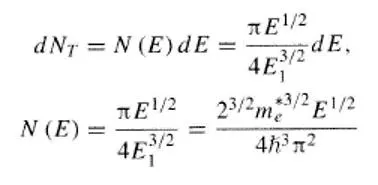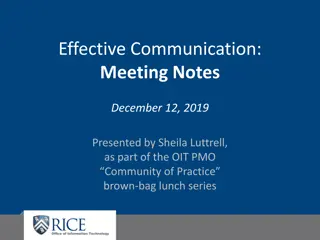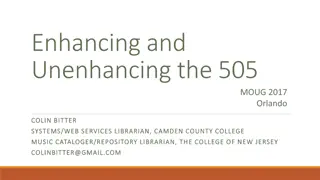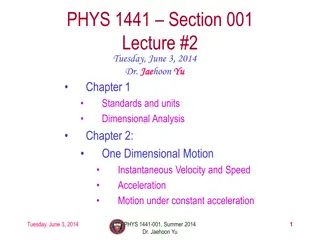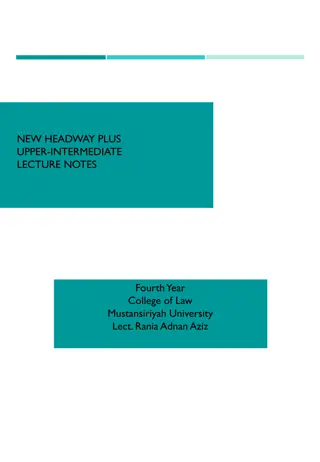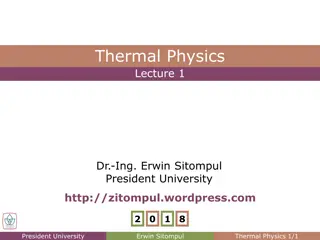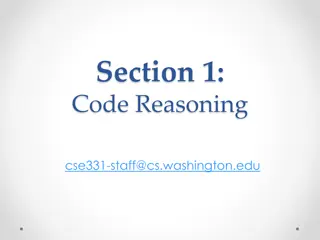Nanoelectronics Lecture Notes Highlights
The image highlights key concepts from nanoelectronics lecture notes, covering topics such as density of states in different dimensions, classical and quantum statistics, Fermi distribution, and carrier concentration in materials. The visuals aid in understanding complex theoretical aspects of nanoelectronics discussed in the lectures by J. Denenberg from Fairfield University.
Download Presentation

Please find below an Image/Link to download the presentation.
The content on the website is provided AS IS for your information and personal use only. It may not be sold, licensed, or shared on other websites without obtaining consent from the author.If you encounter any issues during the download, it is possible that the publisher has removed the file from their server.
You are allowed to download the files provided on this website for personal or commercial use, subject to the condition that they are used lawfully. All files are the property of their respective owners.
The content on the website is provided AS IS for your information and personal use only. It may not be sold, licensed, or shared on other websites without obtaining consent from the author.
E N D
Presentation Transcript
EE 315/ECE 451 NANOELECTRONICS I Derived from lecture notes by R. Munden 2010
8.1 DENSITYOF STATES 2 Imagine the hard walled box, and the energy states available: # states in sphere of radius En: Octant of sphere 10/13/2015 J. DENENBERG- FAIRFIELD UNIV. - EE315
DOS 3D SYSTEM 3 Accounting for Spin. Potential and L3 = 1 for density per unit volume: 10/19/2015 J. DENENBERG- FAIRFIELD UNIV. - EE315
8.1.1 DENSITYOF STATES IN LOW DIMENSIONS 4 For One Dimensional Quantum Wire With spin and potential: 10/19/2015 J. DENENBERG- FAIRFIELD UNIV. - EE315
8.1.1 DENSITYOF STATES IN LOW DIMENSIONS 5 For 2D Quantum Well Although real materials are 3D, quantum confinement in small materials can approximate low dimensional structures, like quantum dots. For 0D Quantum Dots 10/19/2015 J. DENENBERG- FAIRFIELD UNIV. - EE315
8.1.2 DENSITYOF STATES INA SEMICONDUCTOR 6 In 3D materials: We can use in semiconductors by substituting effective mass for band structure and Ec for potential In Silicon (with transverse and longitudinal effective mass) and 6 fold symmetry of the conduction band: 10/19/2015 J. DENENBERG- FAIRFIELD UNIV. - EE315
8.2 CLASSICALAND QUANTUM STATISTICS 7 Classical or Boltzman Distribution (distinguishable particles e.g.molecules): Fermi-Dirac Distribution (indistinguishable, exclusive particles e.g. electrons): Bose-Einstein Distribution (indistinguishable, non-exclusive particles e.g. photons and phonons): 10/19/2015 J. DENENBERG- FAIRFIELD UNIV. - EE315
FERMI DISTRIBUTION 8 Ripples on the Fermi sea Occupied Unoccupied 10/19/2015 J. DENENBERG- FAIRFIELD UNIV. - EE315
8.2.1 CARRIER 9 CONCENTRATIONIN MATERIALS 3D confined box 10/19/2015 J. DENENBERG- FAIRFIELD UNIV. - EE315
8.2.2 THE IMPORTANCEOF FERMI ELECTRONS 10 11/1/2010 R.MUNDEN - FAIRFIELD UNIV. - EE315
ELECTRON STATES 11 10/19/2015 J. DENENBERG- FAIRFIELD UNIV. - EE315
8.2.3 EQUILIBRIUM CARRIER CONCENTRATION 12 10/19/2015 J. DENENBERG- FAIRFIELD UNIV. - EE315
8.3 MAIN POINTS 13 the concept of density of states in various spatial dimensions, and the significance of the density of states; how the density of states can be measured; quantum and classical statistics for collections of large numbers of particles, including the Boltzmann, Fermi-Dirac, and Bose- Einstein distributions; the role of density of states and quantum statistics in determining the Fermi level; applications of density of states and quantum statistics to determine carrier concentration in materials, including in doped semiconductors. 11/1/2010 R.MUNDEN - FAIRFIELD UNIV. - EE315
8.4 PROBLEMS 14 11/1/2010 R.MUNDEN - FAIRFIELD UNIV. - EE315
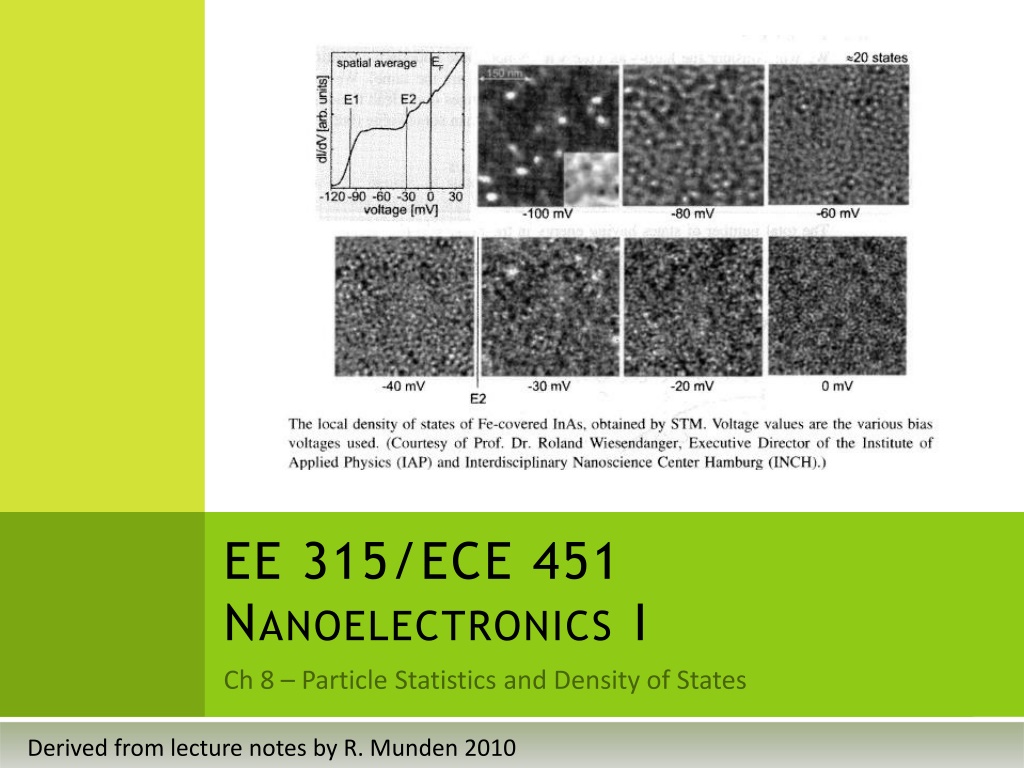
 undefined
undefined









